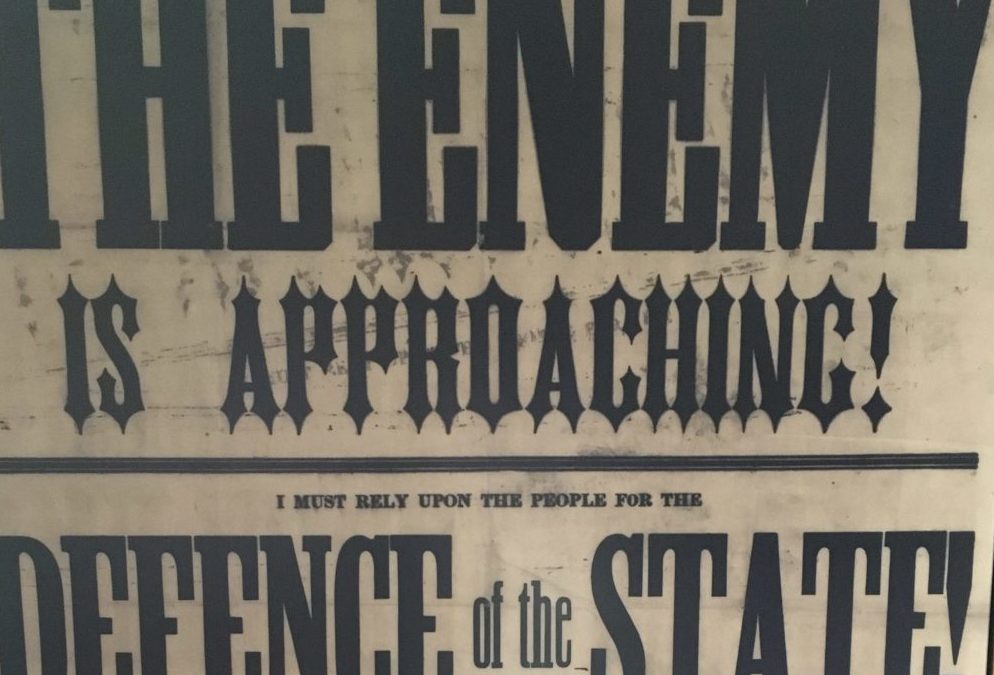April 29-30 Gettysburg and Bird-in-Hand, PA
Driving through Pennsylvania, we stopped at the Gettysburg battlefield, where Lincoln’s Union army defeated the South in the final turning point of the Civil War. Vicksburg’s 47 days of siege and death still haunted me, from our trip through the South in January. https://www.nps.gov/vick/index.htm
Gettysburg was even worse, with more than 51,000 dead and injured. The National Park Service visitor center recreates the July 1-3, 1864 battle in photos, exhibits and even a giant 360-degree walk-in diorama, featuring lifelike images of soldiers killing each other. Today it’s another national park to visit, a bucolic field with giant stone markers identifying the state battalions that fought and died there. But underneath the surface lie the bones and bullets and horrors of war.
How could anyone think this should be where to spend a family vacation? Sure enough, there were tourists, just as at Vicksburg, gawking at all the gory details. As we drove away, I couldn’t shake off the gloom of this place. The ghosts of all those desperate men and horses were still lingering there, sucking all the oxygen and hope out of the air. There was no talk in the museum about how we need to end such wars. In fact, the American Civil War was just a prelude to the larger, more terrible world wars of the 20th century.
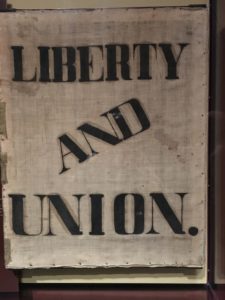
I hoped to ease my sadness and anger, in the Amish farms of Lancaster County. Surely the Amish people would provide a peaceful contrast to what we had just seen, at Gettysburg and on the nightly news.
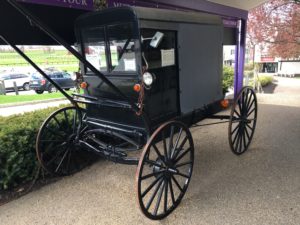
If our tour guide is to be trusted, the Amish offer their work to God and choose not to use modern conveniences because that would compromise this commitment. They do use battery-driven tools and gas-fueled diesel engines, as needed, but the electrical power grid is forbidden. It was not clear whether solar energy is allowed. Each Amish community has elders who decide these specific do’s and don’ts. They don’t go to churches, or have ministers, but rather meet in each other’s homes for religious observances every two weeks.
The reason for the horse-driven carriages is to keep people close to their families, less than 40 miles from home, the guide said. They are not looking for a leisurely ride! The Amish, keen judges of horseflesh, like to buy horses that were bred to be racing champions, but fell short somehow, so they were put up for sale. Phone calls are permitted only outside the house or barn, from phone booths they install along the road. Portable phones are not allowed. They consult the nearest doctor when they get sick.
Even if they are born in Amish families, young people are not officially Amish until they commit themselves, sometime between the age of about 16 and 22, to join the faith. They are even expected, as teenagers, to sample the outer world before returning to their families and the constraints they require. However there is a catch—Amish children are forbidden to continue their formal educations past 8th grade. ”That’s why there aren’t any Amish doctors, lawyers or accountants,” our guide observed.
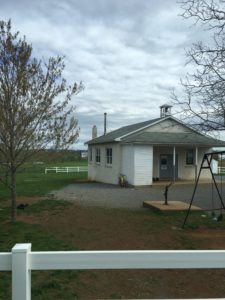
Amish students stop at 8th grade
Instead, the Amish are famous for their skills at the old-fashioned trades, such as agriculture, horsemanship, cooking, basket-weaving and carpentry. Amish children who choose to stay outside the religion must leave home. They can go off to high school and college, and visit the family from time to time. But if they choose to be officially Amish, and then leave the faith, they are shunned. There is to be no further contact with them.
It began to feel more like a cult than a holy way of life. Is it not too harsh to have to shut off your mind to advanced mathematics, science, medicine, and all the other disciplines, in order to be part of your loving family, in the community where you were raised? How could anyone make such an impossible choice?

I was grateful that if we ever have a world war that wipes out the Internet, cell phones and electricity, the Amish can keep the human race alive. But I was also grateful that my own Pennsylvania ancestors were Mennonites rather than Amish. The Mennonites still dress and worship in many of the same quaint old ways, but they allow themselves an advanced education, with automobiles, and other modern conveniences.
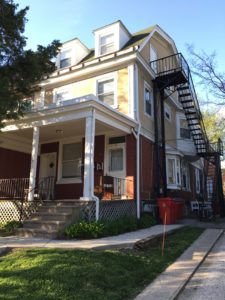
My grandparents’ homestead
As we headed through Philadelphia toward Valley Forge, we paused briefly in front of the wood frame house where my father grew up, in a strict, religious household where not a penny, or a moment, was wasted. Both of his parents were high school principals, and he became a university professor.
Loud rap music wafted out of an upstairs window. A middle-aged Black woman came out the front door, but she didn’t notice us sitting in the car. Not wanting to disturb her privacy, we drove away.
People may try to hang on to the old ways, as a dedication to God. But they can’t stop history. And why should we? Everything changes. It is up to us to make these changes for the better.
From the gory battlefield of Gettysburg, through the frozen Amish way of life, to the Philadelphia suburbs, we were looking for America’s future. That was our journey, and we were almost home!

